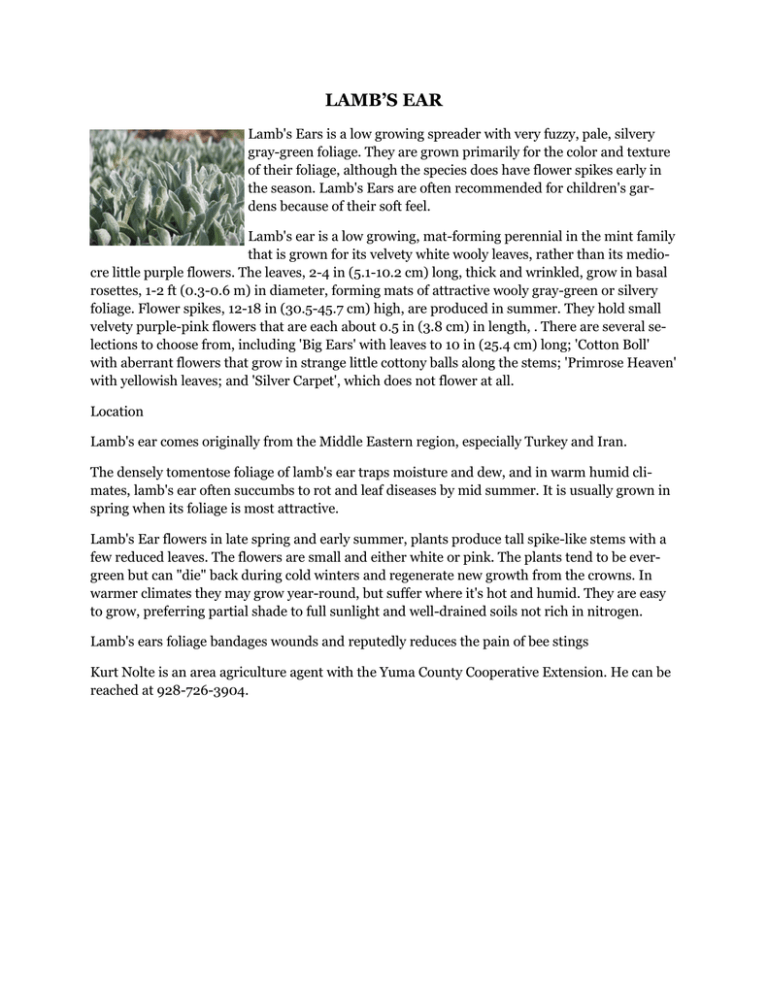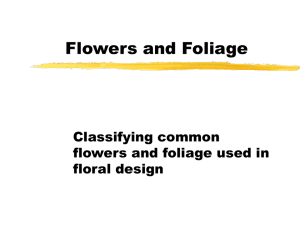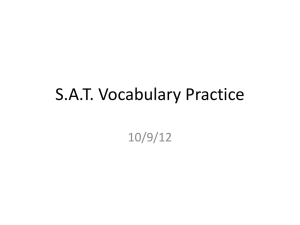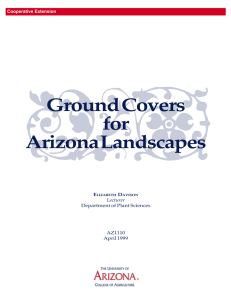LAMB’S EAR
advertisement

LAMB’S EAR Lamb's Ears is a low growing spreader with very fuzzy, pale, silvery gray-green foliage. They are grown primarily for the color and texture of their foliage, although the species does have flower spikes early in the season. Lamb's Ears are often recommended for children's gardens because of their soft feel. Lamb's ear is a low growing, mat-forming perennial in the mint family that is grown for its velvety white wooly leaves, rather than its mediocre little purple flowers. The leaves, 2-4 in (5.1-10.2 cm) long, thick and wrinkled, grow in basal rosettes, 1-2 ft (0.3-0.6 m) in diameter, forming mats of attractive wooly gray-green or silvery foliage. Flower spikes, 12-18 in (30.5-45.7 cm) high, are produced in summer. They hold small velvety purple-pink flowers that are each about 0.5 in (3.8 cm) in length, . There are several selections to choose from, including 'Big Ears' with leaves to 10 in (25.4 cm) long; 'Cotton Boll' with aberrant flowers that grow in strange little cottony balls along the stems; 'Primrose Heaven' with yellowish leaves; and 'Silver Carpet', which does not flower at all. Location Lamb's ear comes originally from the Middle Eastern region, especially Turkey and Iran. The densely tomentose foliage of lamb's ear traps moisture and dew, and in warm humid climates, lamb's ear often succumbs to rot and leaf diseases by mid summer. It is usually grown in spring when its foliage is most attractive. Lamb's Ear flowers in late spring and early summer, plants produce tall spike-like stems with a few reduced leaves. The flowers are small and either white or pink. The plants tend to be evergreen but can "die" back during cold winters and regenerate new growth from the crowns. In warmer climates they may grow year-round, but suffer where it's hot and humid. They are easy to grow, preferring partial shade to full sunlight and well-drained soils not rich in nitrogen. Lamb's ears foliage bandages wounds and reputedly reduces the pain of bee stings Kurt Nolte is an area agriculture agent with the Yuma County Cooperative Extension. He can be reached at 928-726-3904.





